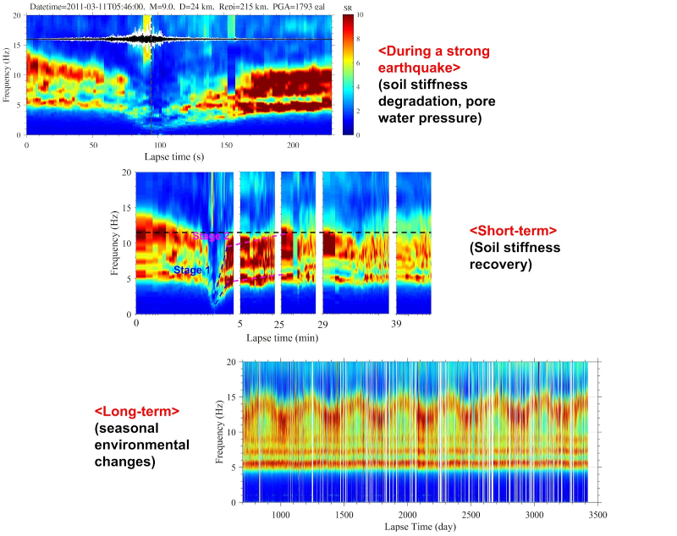Site Response Temporal Change Evaluation
less than 1 minute read
To examine if the large interevent variability of seismic site responses at liquefiable sites is reducible, I investigated the temporal variability of seismic site responses at a liquefiable site using the sliding window spectral ratio method. I used stacked images of surface-to-borehole spectral ratios to track changes in seismic site response characteristics at temporal scales varying from seconds to decades. I observed that resonance frequencies dropped by ~70% during the mainshock of a liquefaction-triggering strong earthquake (indicating significant soil softening behaviors) and had an ephemeral increase by ~40% due to the strong soil dilatant behavior. In addition, I observed that the resonance frequency recovered after a strong earthquake at two phases with different recovery speeds and fluctuated along the seasonal changes of hydrologic conditions in the shallow subsurface.

